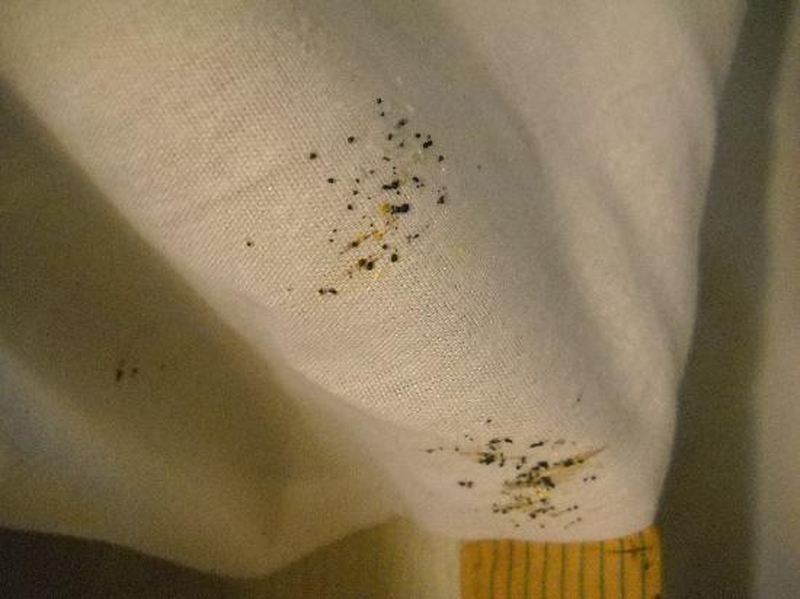Bugs are pests not because they’re tiny, and not even because they like to hang out in packs. Bugs are pests because they hide. They’re sneaky, and they know how to make themselves scarce. But if you know how to root them out and find their hiding places, you can get rid of bugs in your home and garden areas.

Part 1
Bed Bugs
One of the most high-profile home pests are bed bugs, properly known as Cimex lectularius. That’s Latin for get out of my house. That’s a jest, of course, but it’s no joke that you don’t want bed bugs in your home.
Bed bugs feed on human blood, and any home can be vulnerable to them despite its cleanliness. Bed bugs like people best, but they will also feed on household animals. You will usually find them around the bed, as the name suggests. Look for them around mattresses and bed frames. Check folds and dark, hidden places. They’ll even hide under carpeting and in cracks. If you find inexplicable blood spots on your bedding, you may have a bed bug infestation.
Ants
Ants are a common pest problem both inside the home and in garden areas outside the home. If you’re finding ants repeatedly in a single location, there is an ant nest nearby.
Ants don’t always build their homes in soil. They may also build nests beneath rocks and in other dark, hidden locations. To find the ant nest, look for an ant trail. These pests commonly walk in long lines as they go about their routines. Find this line of ants and follow them to their nest. Once you know where the ants like to hide, you can get rid of them.
Ladybugs
Ladybugs are tricky home and garden pests because of the superstition surrounding them. They're good for your garden, and everybody loves them in twos or even threes.
But they can infest your home, and ladybugs can also draw other types of beetles once they’ve set up shop. They do not necessarily bring you good luck, but they won’t eat fabrics or wood. This means your home won’t be damaged by them. They will bite human and animal skin, however, which can make life unpleasant.
Ladybugs need to hibernate, and this can draw them into your home. Warm cracks and tree trunks are attractive to them. Look for yellow residue, something ladybugs leave behind, to locate their hiding places. Ladybugs and beetles are very hard to remove once they are inside the home, but they will leave their hibernating places in summer.
Bug-proofing
When you know more about where bugs like to hide, you have a better chance of getting rid of them. Start looking for areas that might be attractive and inviting to bugs, and take care of them.
Door seals: Check all the doors on the exterior of your home and look for gaps. Use a threshold and/or door sweep to fix gaps beneath the door. Weatherstripping can improve gaps elsewhere.
Windows: Screens on windows prevent bugs from flying in, so install them! Installing a screen is a simple DIY.
Spot trouble: Walk around your yard and look for problem areas. Overgrown and shadowy areas attract bugs, as do standing pools of water. Even a small pool of water will draw insects. Keep pools and hot tubs covered when not in use. Eliminate bird baths, fix poor-draining areas, and you’ll have fewer mosquitoes hanging around.
Seal: Look all around the outside of your home, and search for chinks in the armor. Don’t forget to check the foundation, too. If you find cracks, gaps and other weak points, seal them up with caulk or cement. Replace rotting wood, broken siding and other trouble spots that you find. Big holes can be covered with fine wire mesh first, then repaired with caulk or cement.
Get Rid of Bugs
If you find bugs on your house or garden plants, drive them away with a little garlic water. Mash fresh cloves in water and pour the mixture in a spray bottle. Apply this to bug-infested plants of all types. Draw unwanted bugs already inside the home with a bowl of sugar water. Squirt a little liquid soap in the mixture and place the bowl somewhere. Bugs will be drawn to it.
Find out where the bugs are hiding so you can seal off their entry points, get them out and protect your home. No bug is truly harmless, because they draw more bugs all the time. Before you know it, they’ll take over your home and garden. Once you know how to find them, you can stop them.

View All Comments /Add Comment